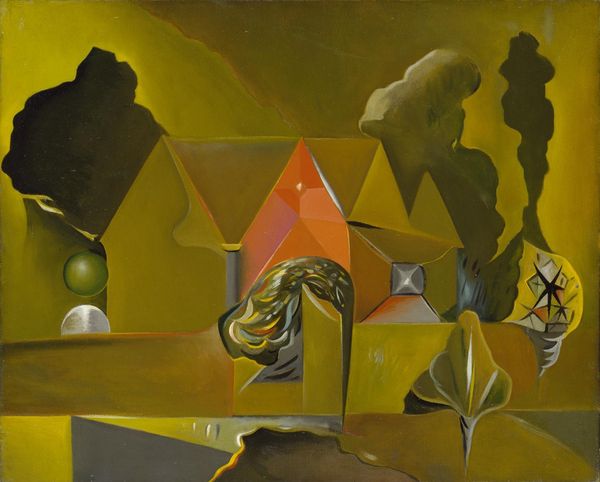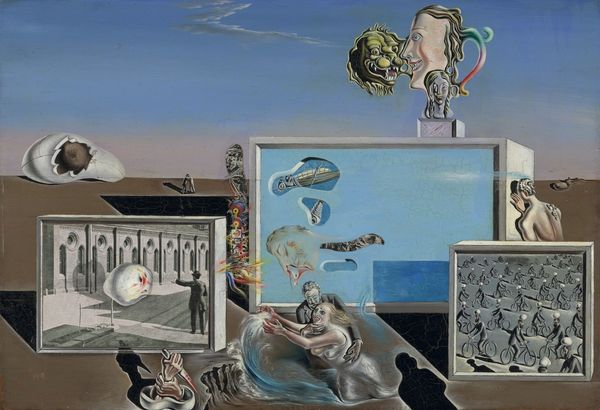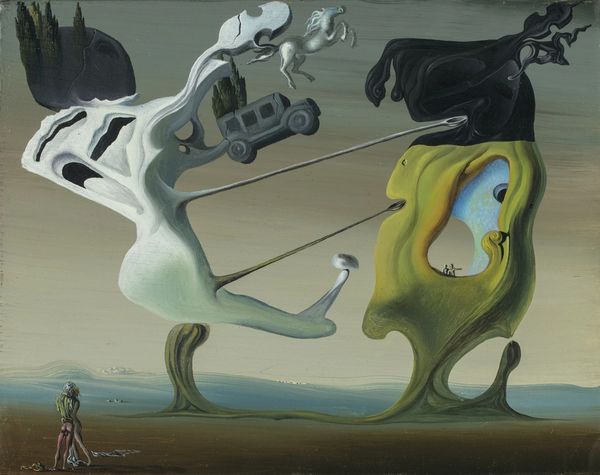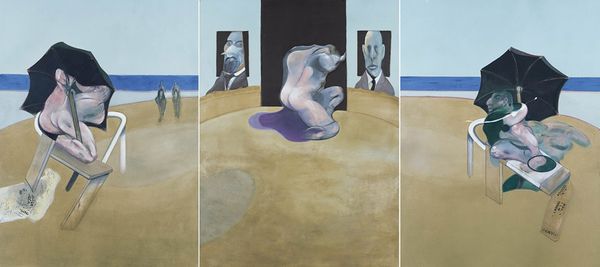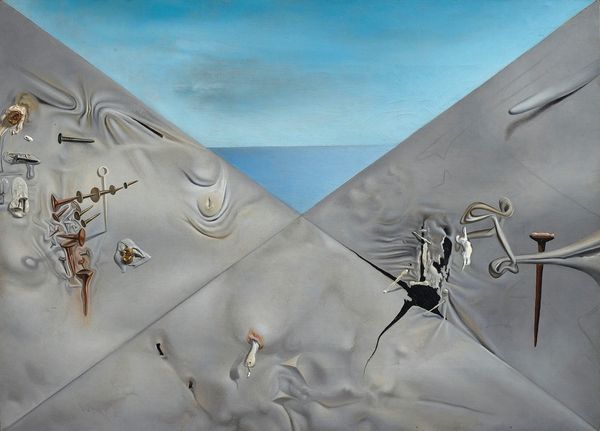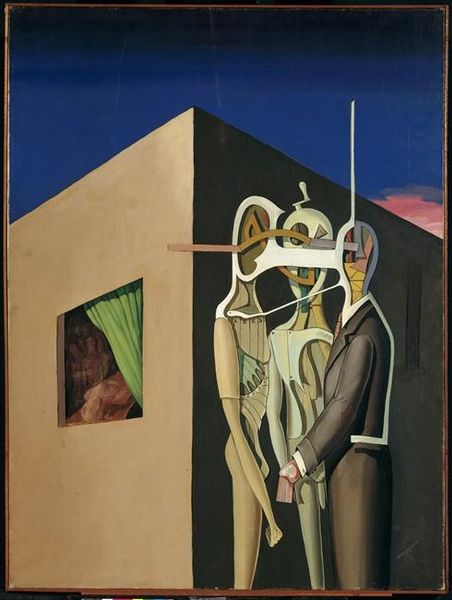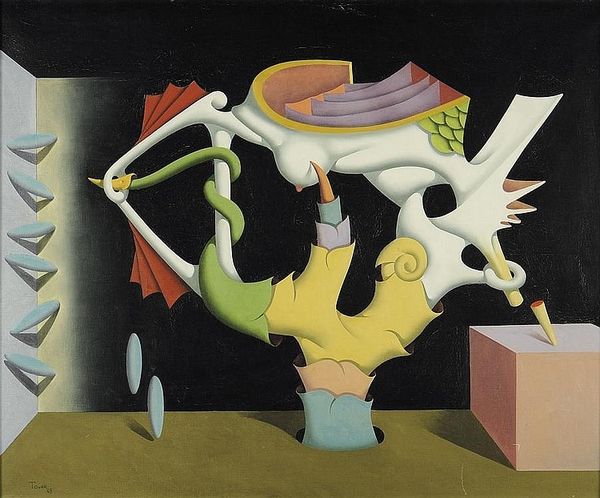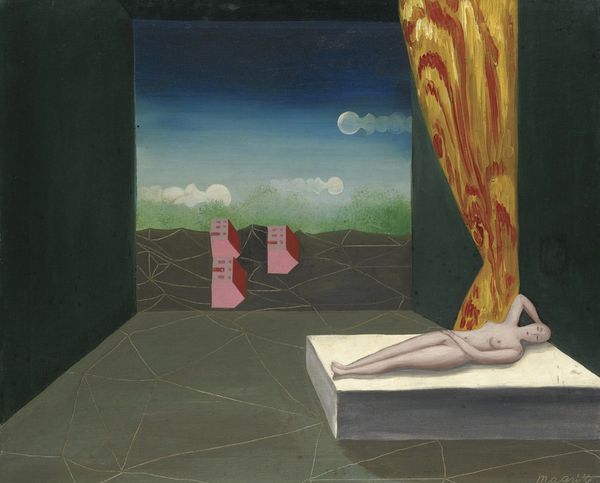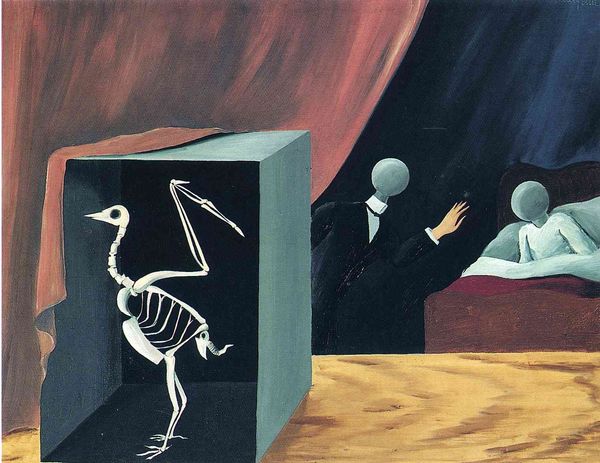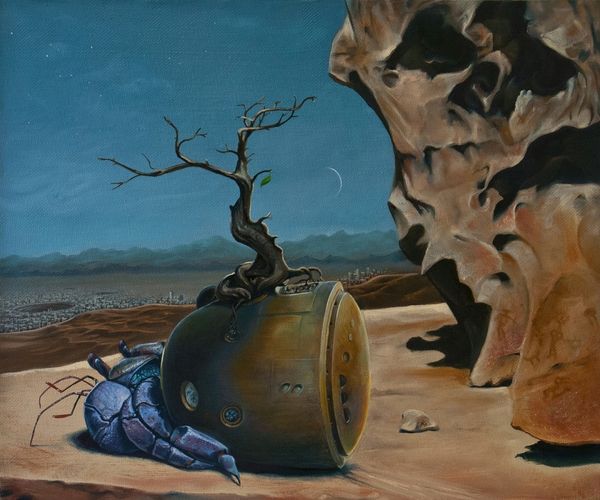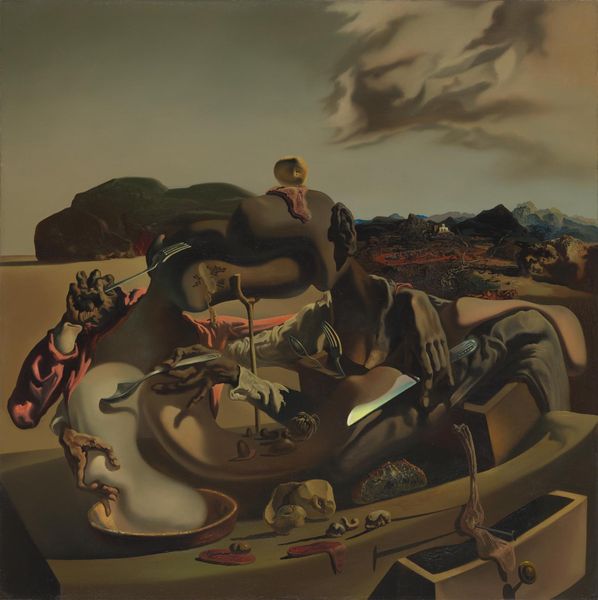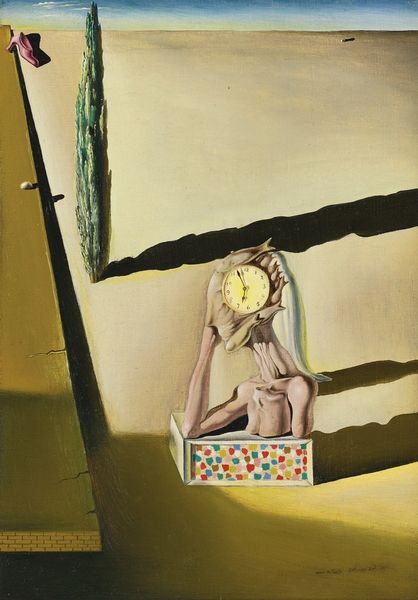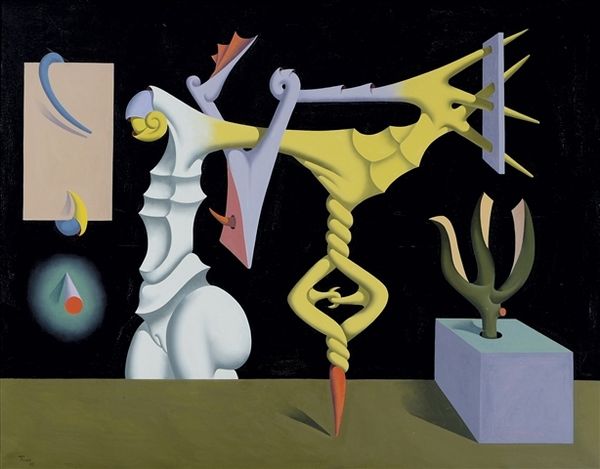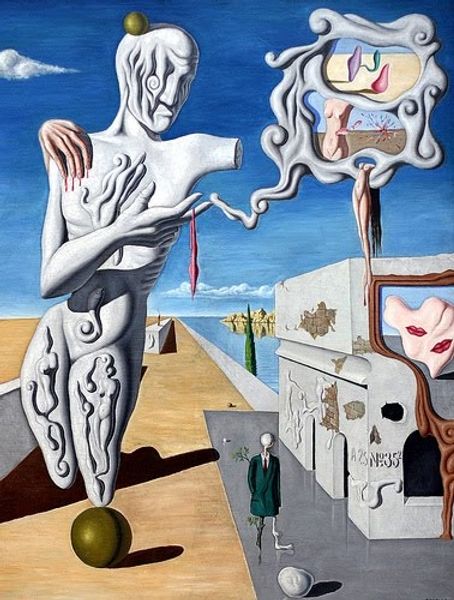
painting, oil-paint
#
painting
#
oil-paint
#
landscape
#
figuration
#
oil painting
#
cityscape
#
surrealism
#
modernism
Copyright: Modern Artists: Artvee
The Spanish surrealist artist Salvador Dali (1904-1989) remains a controversial figure in the history of art. His extravagant, divisive personality is almost mythical. Dali has long been associated with claims of narcissism, violence, and an ambiguous stance on fascism which enraged his fellow Surrealists. So, how does the legend surrounding Dali inform our interpretations of his art? Is it ever possible to separate the art from the artist? 🖼️💬 Dali’s most famous oil painting, The Persistence of Memory (1931), has infiltrated popular culture. An icon of the twentieth century, the strange and enigmatic oil painting depicts three melting pocket watches in a barren desert landscape. Rocky cliffs loom in the background, inspired by the coastline of Catalonia. In the foreground, a closed watch is swarmed by an army of ants. This perhaps references ideas of death and decay. Most mysteriously, however, is the lump of pale pink which occupies the centre of the painting. Take a close look… does it remind you of anything? Can you make out a nose and eyelashes? This strange creature is often interpreted as a distorted human face. Perhaps the face is melting, just like the clocks which surround it. The contrast between softness and hardness in The Persistence of Memory is striking. Dali has merged flowing shapes with angular lines: the clocks are fluid and flexible, while the dead tree and rocky cliffs are solid and heavy. Dali himself stated that he did not understand the meaning of this painting. Its enigmatic symbolic elements are open to interpretation. Does this piece represent the merging of reality and fantasy? The subjectivity of time? The power of the subconscious mind? Either way, Dali has blended realistic details with absurd imagery to build a dreamlike atmosphere that challenges reality, logic, and rationality. The artist created this work using his original ‘paranoiac-critical method’. He intentionally entered a state of paranoia and delirium, during which he would paint onto the canvas. Dali believed that capturing his hallucinations in painting allowed him to explore the irrationality of the unconscious mind. 💭 Editor: Lucy Jude Grantham
